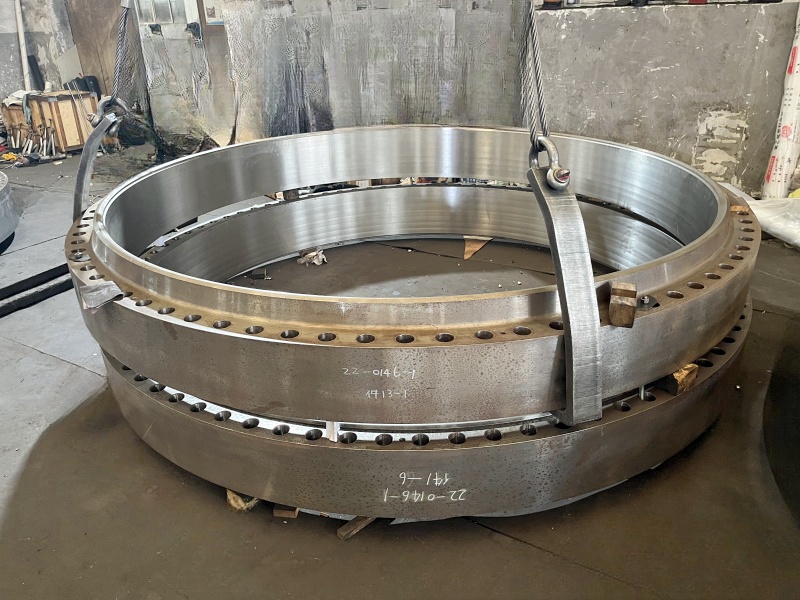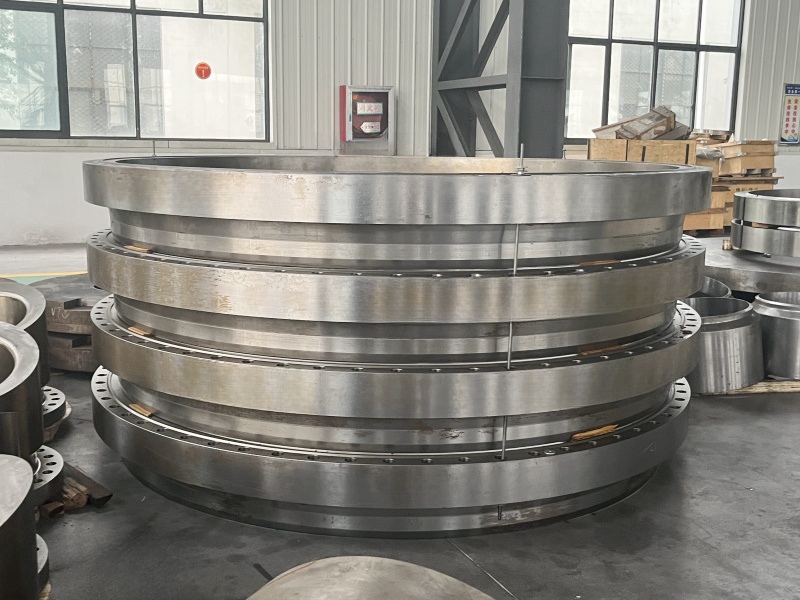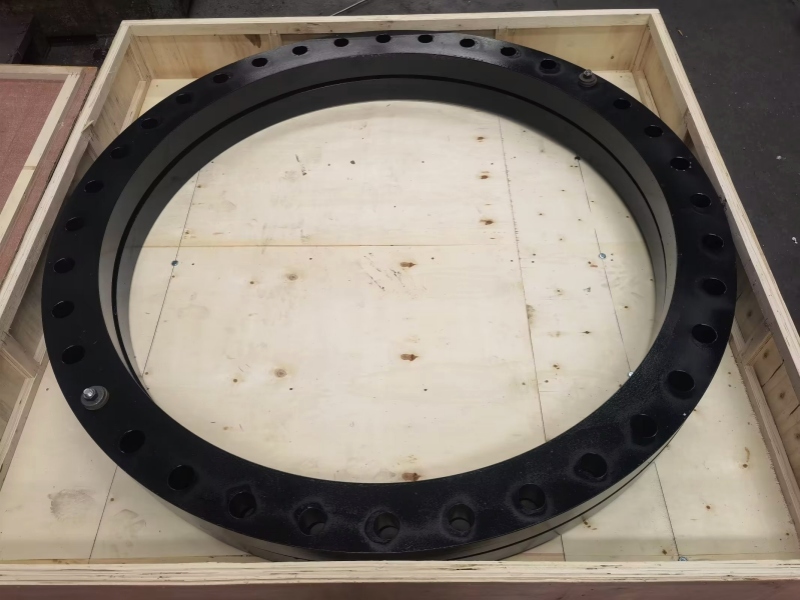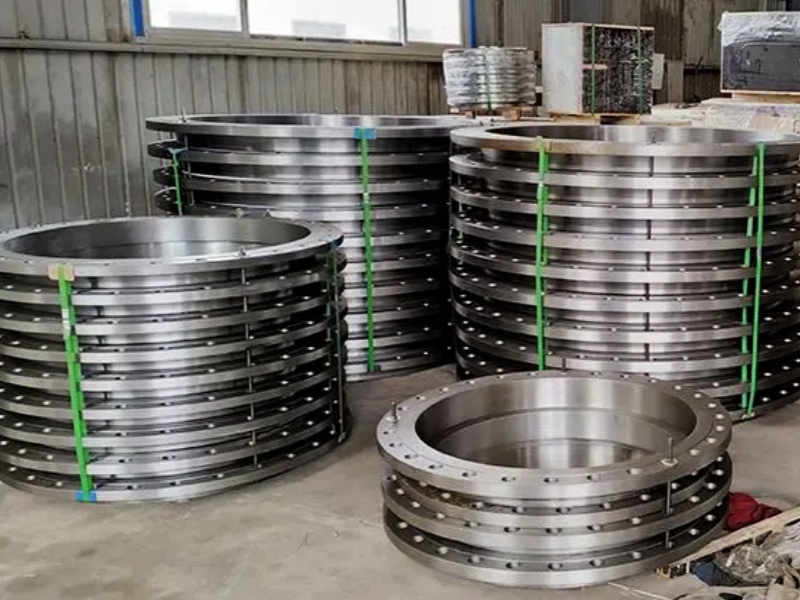
What Are You Looking For?
The Girth flange for pressure vessel are the basic components for connecting various pressure vessel components and are widely used in industrial fields such as petrochemical, atomic energy, electric power and light industry.
For pressure vessels, a flange is a component, which includes flanges, gaskets, connecting bolts or studs, and nuts. Its function is to combine different pressure-bearing components while ensuring that the connection parts do not leak.
The main failure form of flange connections is the stiffness failure of the joint, and its external manifestation is leakage. The medium inside the pressure vessel has the characteristics of high temperature and high pressure, and is also flammable, explosive or toxic. Serious secondary disasters will occur once leakage occurs. Seriously threatening the safety of the pressure vessel itself, surrounding equipment and personnel. Therefore, the primary consideration in the design and selection of container flanges is the overall sealing performance.

Sealing form of girth flange for pressure vessel:
(1) Forced sealing. The sealing surface is compressed by tightening the connecting bolts between the end cover and the cylinder flange to achieve the purpose of sealing, such as flat gasket seals, Cazari seals, etc.
(2) Self-tightening seal. The pressure of the medium in the container is used to generate a pressing force on the sealing surface to achieve the purpose of sealing. Its sealing force increases with the increase of medium pressure. Therefore, reliable sealing performance can be maintained under higher pressures, such as combined seals, O-ring seals, C-ring seals, B-ring seals, wedge seals, octagonal gaskets and oval gasket seals, and flat gasket self-tightening seals. , Wood seal, nitrogen seal, etc.
(3) Semi-self-tightening seal. It not only utilizes the pressure of the medium in the container, but also uses the connection of fasteners to generate a pressing force on the sealing surface to achieve the purpose of sealing, such as a double cone seal.

The operating principle of girth flange for pressure vessel:
When applying preload force to the flange bolts, the bolt force compresses the gasket through the flange ring, forcing the flange sealing surfaces and the raised surfaces on the gasket to fill in due to the deformation of the gasket. This creates the initial sealing condition to prevent fluid leakage.
When a pre-tightening force is applied to the flange bolts, the bolt force compresses the gasket through the flange ring, forcing the flange gasket to undergo compression deformation. When the bolting force reaches a certain value, the four convex uneven surfaces on the flange sealing surface and the gasket are forced to fill up with the help of gasket deformation, which creates initial sealing conditions to prevent fluid medium leakage.
At this point, the compressive force on the unit effective sealing area of the gasket is called the initial seating stress. When the equipment or pipeline is subjected to fluid pressure, the bolts are subjected to tensile stress and elongation. The flange sealing faces move in the direction of separation, causing a decrease in the compressive force between the sealing faces and the gasket. As a result, the compression of the gasket decreases, and the preload seating stress decreases.
If the sealing gasket has sufficient resilience at this point, the deformation of the gasket can compensate for the separation between the bolts and the sealing faces, ensuring that the preload seating stress does not drop below the operating seating stress, thus maintaining a good sealing condition for the flange. Conversely, if the gasket lacks sufficient resilience, the seating stress drops below the operating seating stress, or even gaps reappear at the seal, resulting in seal failure.

The factors that affect the flange sealing of pressure vessels are as follows:
1. Bolt pre-tightening force
Proper pre-tightening force ensures that the gasket retains a certain seating stress during operation. Excessive pre-tightening force can cause the gasket to be compressed or extruded, leading to seal damage. The distribution of pre-tightening force on the gasket also affects the sealing performance. A method to ensure uniform distribution of pre-tightening force is to increase the number of bolts, provided that it meets the requirements for bolt installation and removal space.
2. Gasket sealing performance
Gaskets are an important component of sealing. A suitable gasket material should reflect the fact that the gasket can produce necessary elastic deformation under the action of appropriate preload force without being crushed or extruded. During operation, the distance between the flange sealing surfaces is enlarged, and the gasket material should have sufficient rebound ability to make the gasket surface and flange surface in close contact to continue to maintain good sealing performance.
3. Characteristics of flange sealing surface
The type and surface properties of the flange sealing surface play a crucial role in affecting the sealing effect. Concave-convex surfaces and tongue-and-groove surfaces should be used in situations with strict working conditions. The flatness of the flange sealing surface, the center line and the perpendicularity between the sealing surface and the flange directly affect the uniformity of the force on the gasket and the good contact between the gasket and the flange. The surface roughness of the flange sealing surface should be consistent with the requirements of the gasket. No radial knife marks or scratches are allowed on the surface, let alone surface cracks.
4. Flange stiffness
Insufficient stiffness will cause excessive warping deformation of the flange, leading to sealing failure. There are many factors that affect flange stiffness. Among them, increasing flange thickness, increasing flange outer diameter and other methods can improve flange stiffness, reduce deformation, enable the bolt force to be evenly transmitted to the gasket, and obtain uniform and sufficient sealing specific pressure. At the same time, the sealing performance can be improved. The moment arm that reduces the bolt force can reduce the bending moment endured by the flange and is beneficial to sealing.
5. Operating conditions
Operating temperature, pressure and chemical and physical properties of the medium also affect the reliability of flange connections. As the temperature increases, the viscosity of the medium becomes smaller and the tendency of leakage increases; high temperature increases the chemical and physical activity of the medium, causing corrosion and dissolution of gaskets and flanges; high temperature can also cause corrosion of bolts, flanges and gaskets. Creep and stress relaxation.
